The lives of fallen students must inspire the change we need

We enter the mournful month of August, a time burdened with the memory of excruciating tragedy. The unseen amount of bloodshed witnessed in July has also left an indelible mark on our collective consciousness. As a nation born through the legacy of blood, violence is not unfamiliar to us. However, the recent deaths during the ongoing student protests are grotesque, marking a significant turning point. To paraphrase Lenin, decades have happened in the last two weeks that otherwise would not have happened in decades.
Father of the Nation Bangabandhu Sheikh Mujibur Rahman, whose death alongside his family members we mourn in August, was a spearhead of many student movements that have pierced through our national history. The estimated death tolls in the Language Movement of 1952 were 12; in the 1969 Mass Uprising, it was 61; in the Dhaka University massacre of March 25, 1971, it was over 220; and in the anti-Ershad protest of the 1990s, it was around 50. In the first three instances, the perpetrators were occupying forces or outsiders, and in the last, a dictator turned against his own people. This time though, witnessing at least 200 deaths, mainly students, in two weeks at the hands of our fellow citizens adds an unprecedented layer to our sorrow. This occurred under the leadership of a prime minister who had earlier survived a devastating grenade attack that claimed 24 lives in one fatal August. The moist soil of freshly buried July victims and the earth under which the deceased victims of past violence rest highlight the urgent need for peace and stability. Enough blood has been spilt. Now we need water to wash away the sins, the guilt, and the blood.
We require compassionate individuals like Mugdho, who bravely made his way through the crowd to distribute water bottles to the protesters, asking, "Does anyone need water?" His water bottles emptied our hearts and moistened our eyes. His death, among many, urges us to escape the cycle of violence and demands a critical engagement with the triangle of violence defining this moment. To climb out of this hole, we must retrace the steps that led us here.
Norwegian sociologist Johan Galtung's theory of the interconnected triangle of direct, structural, and cultural violence offers an explanation. The most visible tip of the triangle right now is "direct violence," epitomised by the police brutality leading to hundreds of deaths, thousands of injuries, and numerous arrests. Despite attempts by police and government spokespersons to blame hidden forces exploiting the situation, citizen journalism empowers us to see clearly and form our own conclusions. While it is true that students became aggressive in response to police violence, this does not justify the use of live ammunition by law enforcers, hyper-incarcerations, and cyber-surveillance. Indeed, unidentified mobs vandalised state property, but real-time efforts to safeguard national property appeared insufficient. The high number of casualties in the streets underscores one brute fact: the authorities and their auxiliary forces unleashed unprecedented violence to quash these young protesters across the country.
This leads us to the unseen origin of the scourge that Galtung speaks of: "structural violence." In this context, "structure" denotes a pattern of collective social action that has achieved a degree of permanence, while "violence" signifies the suffering and injustice deeply ingrained in ordinary, taken-for-granted patterns. The Students against Discrimination movement dared to challenge the system that rendered life predictable, secure, and comfortable for a privileged few. For the majority outside the inner circle, poverty, insecurity, ill health, and violence are prevalent. For them, the only way out was through collective social action aimed at changing the system.
The allocation of 56 percent of government jobs under different quotas, including 30 percent for descendants of freedom fighters, was symptomatic of underlying structural violence. The introduction of over 100 universities and thousands of colleges over the last three decades has created a desire for upward social mobility. In an emerging economy, the myth of the Fourth Industrial Revolution, international jobs, and startups fostered the aspiration that a peasant's son need not remain a peasant. Therefore, they perceive the quota system as a hindrance to the recognition of meritorious individuals. The soaring unemployment rate exacerbates this issue. Sixty-six percent of national university students are jobless. The official unemployment rate is 3.51 percent, while the World Bank puts it higher at 4.7 percent in 2022. They see that the private sector is much more receptive to candidates with better communication skills or family backgrounds. They observe that elites send their children to English medium schools and pursue higher education abroad. The deep-seated anger is not random. That's why a rickshaw puller or a street hawker fights alongside a student for a cause that does not immediately affect them. The problem is not quotas, but rather discriminatory structural violence.
"Cultural violence," the third corner of Galtung's triangle, encompasses aspects of culture that justify or legitimise both direct and structural forms of violence. To upset the students' protest, the government is fighting a two-pronged war: direct violence and cultural violence. It is no coincidence that the manipulation of identity politics has come to light. The vilification of rightful demands for justice and equality is prevalent. The state employs political language to dehumanise demonstrators and rationalise their violent response. This cultural violence will perpetuate the cycle of oppression, creating a narrative that obscures the legitimate grievances of the underprivileged and normalises their marginalisation.
How do we exit this self-made hole? First, we need decency and prudence to tell the truth. Then, we need to ensure justice and reparation. Only then can we achieve reconciliation. Reconciliation cannot occur without truth-telling, accountability, and a commitment to dismantling the structures of violence that perpetuate inequality and injustice. Like the pandemic, this moment of crisis presents an opportunity for transformation. We can access change through this portal. We must seize this opportunity to build a more equitable and just society where every young person has the chance to thrive. The lives of the fallen students must inspire the change we so desperately need.
Dr Shamsad Mortuza is professor of English at Dhaka University.
Views expressed in this article are the author's own.
Follow The Daily Star Opinion on Facebook for the latest opinions, commentaries and analyses by experts and professionals. To contribute your article or letter to The Daily Star Opinion, see our guideline for submission.
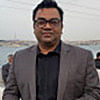
 For all latest news, follow The Daily Star's Google News channel.
For all latest news, follow The Daily Star's Google News channel. 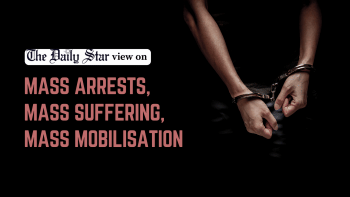






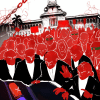
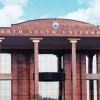


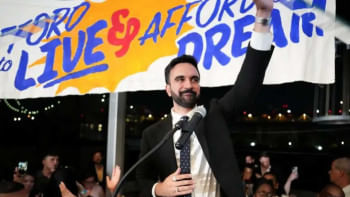
Comments